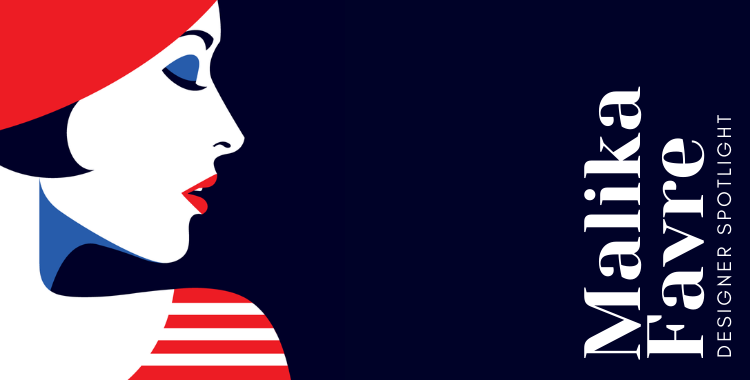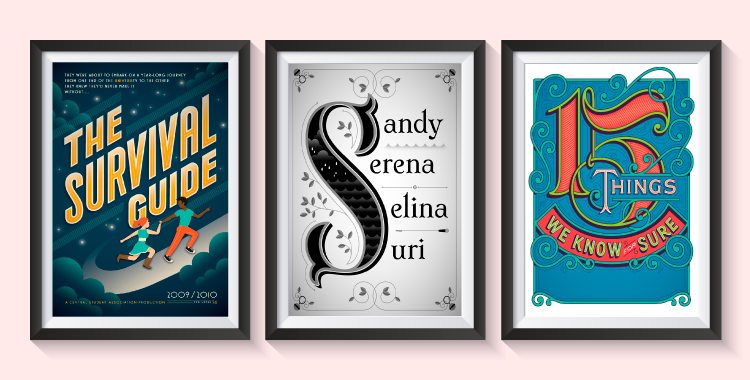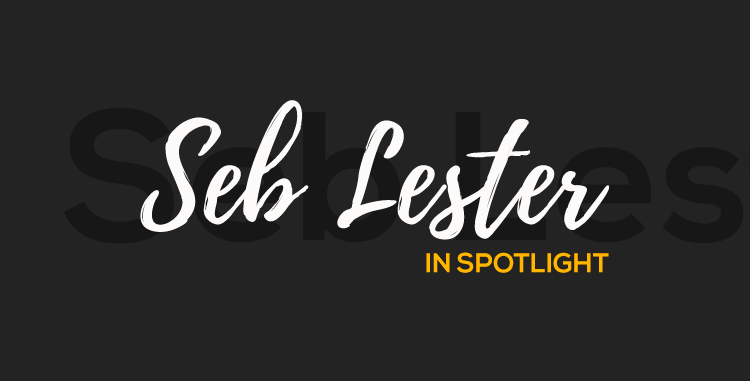Designer Spotlight Ingrid Sundberg: The Art of Storytelling in Illustration and Writing

Feature Image Source: iStock.com/skeeg
How far can your imagination travel?
Storytelling is an art and technique that holds the power to transcend the audience from one place to another without physically moving them. Whether we read words or we see a visual, a story is riveting and engaging. It draws our attention, retains it, evokes emotions and makes us think. We had Ingrid Sundberg shed her view on how she became a rising storyteller and how you can become one too.
Author of the famous Color Thesaurus that took the internet by storm, Ingrid is full of surprises. She is an illustrator, graphic designer as well as the author of the young adult novel All We Left Behind. A woman with passion and determination, she has an enlightening and cheerful personality that is a part and parcel of her life and career. Ingrid is a creativity and writing coach who loves helping others find their creative niche. In case you didn’t know, she’s obsessed with polka-dots, corgis, and dying her hair every color of the rainbow.
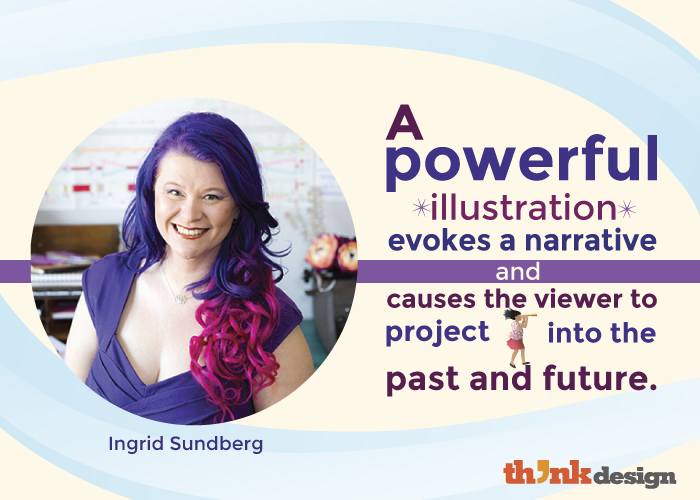
Connect with Ingrid
Let’s begin the interview you’ve come here to read.
Q: Behind every aspiration there’s a story. What is yours?
I grew up in a very small town in Maine with a thriving and vibrant arts community. When you’re surrounded by the woods with the long winters ahead, you end up spending a lot of time in your imagination. As a child, you could always find me drawing, writing, hiking, and doing theater. My early life was all about creativity, expression, and creation; and that’s been a staple of my life ever since.
Later, I left Maine to immerse myself in arts education and I’ve been to college three times for illustration/design (BFA), film (MFA), and creative writing (MFA). My professional life has included graphic design, freelance illustration, photography, teaching art and creative writing, penning screenplays, working in the art department on television and film sets, bookselling, and novel writing. No matter where I go, I’ve always dedicated myself to the world of storytelling and creativity.
Currently, I’m a working novelist and story-development editor. I write young adult novels, create writing craft videos for my YouTube Channel, and work one-on-one as a writing mentor with aspiring authors.
Q: How do you carve the essence of a story in your illustrations? Share examples.
A powerful illustration evokes a narrative and causes the viewer to project into the past and future. Because you can only depict one moment in time in an illustration, one of your goals is to make the viewer start to guess what the moment before was, and what the moment after might be. Writing works in the same exact way. You engage your audience by making them a participant in imagining where the story will go.

The past and future is implied through cues you give the viewer. In my illustration: Scrat, Zap, and Zoo, the viewer will start to build a backstory and personality for each of these characters based on subtle clues like posture, facial expression, color design, proximity to the monster, wardrobe, or even the order they’ve crossed the bridge.
You start to guess what happened to lead up to this moment. You might ask: Where did they get that treasure map? Or you might notice the treasure chest is wet. Did they pull it out of that river and disturb the tentacle creature? These are the type of questions you want your viewer to ask.
Similarly, you can also start to imagine what might happen next in this story. Will the monster attack? If so, who do you think will fend off the monster?
Q: Do you think there are any similarities between storytelling for illustrative work and writing?
Yes! I love that I was a visual artist before I was a writer. Being able to think visually really gives me an extra edge when it comes to writing imagery. Illustration is all about telling a story through color, shape, mood, proximity, expression. Whereas writing is about building a powerful visual image in the reader’s mind … in fact, if you can’t do that as a writer, you’re going to have a hard time keeping the reader engaged.
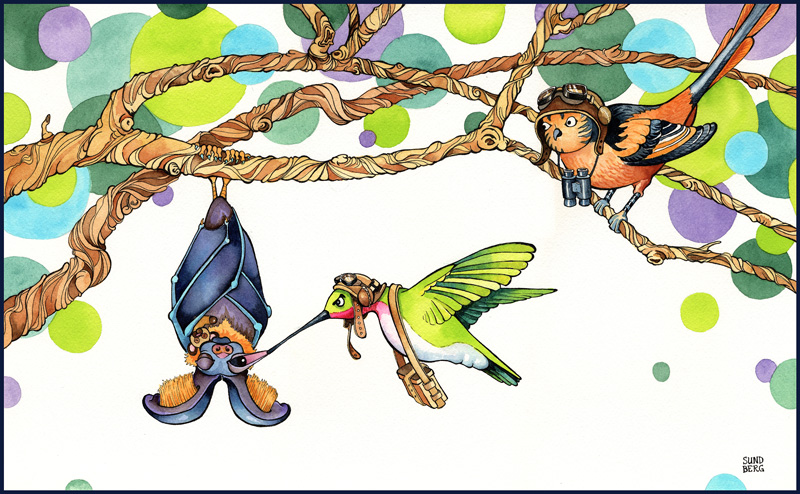
What’s fascinating is that visual art is immediately sensual. You have color, shape and brushstrokes to react to. But with writing – words on the page – you do not have this immediacy. Words themselves don’t contain a sensual quality when viewed, instead it’s the image the words cause the reader to imagine that has emotional impact. As a writer you have to use your words as paintbrushes, choosing specific words, phrases, sounds, meanings to help that story paint itself in the reader’s mind.
What’s great about having a background in illustration is I’ve been trained to think about every detail of the image I’m creating and how it communicates. Choosing the word white over porcelain is similar to choosing between two different colors, or fonts, or expressive lines. They each communicate something different, but must also work with the whole composition.
The end goal is the same in both mediums: create an evocative image that communicates an emotion or idea.
Q: How do you vary your approach in illustrations and writing to suit your audiences?
I think there’s a temptation with a question like this to imply that you should “mold” your style and voice to your audience. But I want to emphasize that your voice – which is the accumulation of your personal life, philosophies, opinions, stylistic influences, etc. – is your most important asset. You must always draw from your personal voice. That’s what makes your work authentic, individual, and completely unreplaceable by anyone else.
That said, illustration and writing are communication art forms. You need to think about how your audience receives and understands information. What engages and excites them? What empowers them? What causes them to have an emotional reaction?

A complex and well-rendered illustration may impress an adult, but a child may only be looking for bright colors, humor, and simplicity. Having a clear sense of who your audience is essential. Once you have a clear and specific idea of that audience, you will know how to communicate to them. Then … use your voice, be yourself, but be mindful of your audience’s communication style.
You need to explore, try, and test. See what your audience reacts to.
Q: We all have influencers who motivate us to follow our dreams. Who would these be for you?
Currently, I’m motivated by personal friends and colleagues who are making strides toward their own dreams. There is nothing more inspiring than watching people you care about making their dreams a priority, and then a reality. There’s a temptation to become envious and compare yourself to your friends, but that is a trap for self-destruction. The second you see how inspiring your own friends are, you become infinitely more active and productive toward your own dreams. If you’re jealous, it’s because you’re not taking action yourself. But when you’re genuinely joyful for your friends, they empower you. It’s kind of amazing how transformative it is. Surround yourself by people doing what you want to do, and together you rise.
Q: What tips do you have for illustrators willing to pursue a career in writing?
If you’re interested in a career that combines writing and illustration together (like picture books), you want to think about how each medium adds new information. The text should not tell you what’s in the illustration. Instead the text should add a new layer to the illustration, and vice versa.

If you want to write prose or poetry, study your favorite books and authors. Writing is about evoking emotion through words in the same way you evoke feeling through color, and emphasis, and value. Think of each sentence, paragraph, or scene like you would for a visual composition – there is always a focal point and all the elements need to lead the reader to one revelation, insight, or image. Just like illustration there’s always a balance. You must pick and choose what to emphasize and what to exclude.
If you’re really interested in writing, there’s way too much to sum up in an interview like this. You can check out my YouTube videos on writing craft here.
Well folks, this is it. I enjoyed reading Ingrid’s perspective and tips on storytelling in illustration and writing, and I hope you did too. My imagination traveled from my workplace to a realm where anything is possible. I’d love to read what you have to say about the art of storytelling. Share your view in the comments below.
How do you make your visual or written story gripping?
Images Source: Ingrid Sundberg – featured with permission
